In graph theory, breadth-first search (BFS) is a graph search algorithm that begins at the root node and explores all the neighboring nodes. Then for each of those nearest nodes, it explores their unexplored neighbor nodes, and so on, until it finds the goal.
In graph theory, breadth-first search (BFS) is a graph search algorithm that begins at the root node and explores all the neighboring nodes. Then for each of those nearest nodes, it explores their unexplored neighbor nodes, and so on, until it finds the goal.
BFS is an uninformed search method that aims to expand and examine all nodes of a graph or combination of sequences by systematically searching through every solution. In other words, it exhaustively searches the entire graph or sequence without considering the goal until it finds it. It does not use a heuristic algorithm.
Algorithm
From the standpoint of the algorithm, all child nodes obtained by expanding a node are added to a FIFO (i.e., First In, First Out) queue. In typical implementations, nodes that have not yet been examined for their neighbors are placed in some container (such as a queue or linked list) called open and then once examined are placed in the container closed.
- Enqueue the root node
- Dequeue a node and examine it
- If the element sought is found in this node, quit the search and return a result.
- Otherwise enqueue any successors (the direct child nodes) that have not yet been discovered.
- If the queue is empty, every node on the graph has been examined – quit the search and return "not found".
- If the queue is not empty, repeat from Step 2.
In the figure below, you can see the animated figure of BFS.
Applications
- Finding all nodes within one connected component
- Copying Collection, Cheney's algorithm
- Finding the shortest path between two nodes u and v (with path length measured by number of edges)
- Testing a graph for bipartiteness
Source
